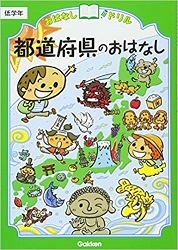Gifu-prefecture translation
Gifu-prefecture
Gassho houses
Gassho-zukuri refers to houses with thatched roofs where trees are joined together like hands in the shape of mountain peaks. The roofs have a narrow angle, so that in the winter, even if there’s a lot of snow, the snow slips off the roof and can’t pile up (lit. makes it difficult to pile up).
Gassho-zukuri houses were built from around the middle of the Edo period to the beginning of the Showa period. Gradually their number decreased, but now there’s a movement to carefully protect them.
Many tourists come from foreign countries to visit Shirakawa-Go known for it’s Gassho-zukuri.
Questions
 What is "Gassho-zukuri? Fill in the blanks!
What is "Gassho-zukuri? Fill in the blanks!
Shizuoka-prefecture translation
Shizuoka-prefecture
Tea harvesting on the 88th day of spring
Do you know the song called “Tea harvesting” knwon for it’s first line, “The summer is drawing near on the 88th day of spring”? On around the 88th day, counting from the start of spring (important, this is around Feb 4.), from the end of April to around the start of May, starts the tea harvesting.
Since the olden days, the Shizuoka-prefecture was known for it’s large tea production. Although tea are glistening deep green, the tea sprouts are yellow. When these sprouts are picked, the whole field gets filled with the sent of tea.
Questions
❶ What starts 88 days after the start of spring? Fill in the 3 characters!
❷ What colour are tea fields? Circle the correct answer!
ア Brown (lol, tea color, devious)
イ Deep green
ウ Yellow
Aichi-prefecture translation
Aichi-prefecture
The Golden Shachihoko and the three unifiers (had to translate from German for this)
Have you ever seen a castle before? All accross japan, there are various castles.
The one in the Aichi-prefecture, the Nagoya Castle tower is home to the “Golden Shachihoko”, that glitters and shines. The “Shachihoko” has the figure of a fish, the head of a tiger, its tail looks at the sky, and its back is lined with sharp spikes. It’s an imaginary animal thought up by humans, but it looks very strong. “Shachihoko” decorate castles as a protecting god.
They say, that the Nagoya castle was built by Tokugawa Ieyasu for his ninth son 400 years ago. Ieyasu, who was born in the Achi-prefecture, ended the war among the society and established the shogunate in Edo. There were other people that played an active role in the ending of the war, besides Ieyasu. Oda Nobunaga, who laid the foundation for unifying the country, and Toyomi Hideyoshi who unified Japan. Nobunaga, Hideyoshi, and Ieyasu, all three were born in the Aichi-prefecture (at the time Owarino and Mikawano provinces). These three are called the three unifiers, and are praised even today.
Questions:
❶ Where is the “Golden shachihoko” in the Nagoya castle? Fill in the five characters!
❷ What do “Shachihoko” look like? Fill in the blanks!
❸ Which statement is correct about the three unifiers?
ア Tokugawa Ieyasu, born in the Aichi-prefecture, established the shogunate in Nagoya.
イ Oda Nobunaga, who laid the foundation for the unification of Japan, built the Nagoya Castle.
ウ Toyotomi Hideyoshi, born in the Aichi-prefecture, unified Japan.
エ Tokugawa Ieyasu, born in Edo, ended the war among the society.
I swear, the most common phrase of this book is さいばいがさかん
This was harder to translate than anything beforehand, probably because of the odd words used constantly throughout the three readings







